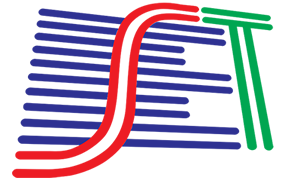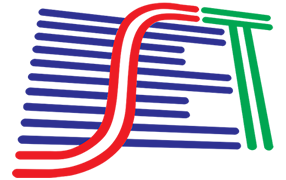TV 2.5: HDR, immersive audio and DTV Play on Digital TV in ISDB-Tb
The so-called “TV 2.5” is the technological upgrade of Digital TV in Brazil, maintaining compatibility with existing receivers. The SBTVD Forum has concluded standardization of the new technologies that will allow an improvement in the quality of audio and video from airborne signals using HDR and immersive and customizable audio, as well as integration with new customizable services via internet (directed content, UHD, on-demand and integration with second screen devices) using DTV Play. Come and get a closer look at these changes that will transform the viewer’s experience and the industry’s business models.
-
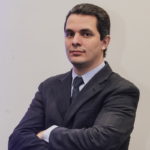
Chair: Luiz Fausto de Souza Brito, Coordinator of Technical Module – Forum SBTVD.
Professional Master’s Degree in Applied Computing (UECE – 2015), Executive MBA on IT (UFRJ – 2011), extension course in Networks and Video over IP (UFRJ – 2009), Bachelor’s Degree in Electrical Engineering with emphasis in Electronics (UFRJ/USU – 2005). Currently working as Regulatory Strategy Specialist for Globo TV Network, Coordinator of Technical Module in Forum SBTVD, member of the Delegation of Brazil in ITU-R (SG 6) and CITEL (PCC.II), member of the TV Reception Technical Group (GT-Rx) of the Brazilian TV Switch-Over Group (GIRED), member of the Technical Module of SBTVD Forum and member of the Harmonization Working Group of ISDB-T International Forum.
-
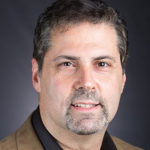
Technicolor SL-HDR1: A Backward Compatible Solution for Brazil TV 2.5
The SBTVD (Sistema Brasileiro de Televisao Digital) Forum has selected Technicolor’s SL-HDR1 as the single dynamic HDR solution for the Brazil TV 2.5 digital television standard. Technicolor SL-HDR1 enables Brazil’s TV operators to continue to broadcast MPEG-AVC/H.264 video as they do today, and add support for HDR in a backward-compatible way.
Read moreThe SBTVD (Sistema Brasileiro de Televisao Digital) Forum has selected Technicolor’s SL-HDR1 as the single dynamic HDR solution for the Brazil TV 2.5 digital television standard. Technicolor SL-HDR1 enables Brazil’s TV operators to continue to broadcast MPEG-AVC/H.264 video as they do today, and add support for HDR in a backward-compatible way. This allows Brazil’s consumers to migrate to HDR televisions over time, while their current TVs continue to receive the same signal as standard dynamic range (SDR). This solution saves bandwidth and minimizes disruption to broadcast operations and end consumers.The Brazil TV 2.5 opportunity presented new challenges for HDR. Elsewhere, HDR has been supported atop the more recent HEVC codec, and in particular with the Main-10 profile of that codec, requiring 10-bit pixels. Brazil TV’s H.264-based transmission uses 8-bit pixels. The combination of the limited compression efficiency of H.264 with 8-bit samples raised the bar for a high-quality HDR solution. Technicolor’s winning solution was extensively evaluated by SBTVD members and Brazil’s TV operators and judged to have superior quality.
Technicolor, Philips and InterDigital have created a suite of world-class HDR solutions for the production, broadcast and streaming markets. In broadcast, the companies have focused on the issue of SDR-HDR conversion and SDR compatibility, uniquely meeting a critical market need. Technicolor SL-HDR solutions, which are specified for multiple MPEG video codecs, have been fully standardized in ETSI, and adopted by ATSC, DVB, SBTVD and elsewhere, enabling implementors to implement the technology independently, speeding development. Technicolor also provides world-class professional solutions for conversion of production video signals between SDR and HDR. Technicolor enjoys a rich partner ecosystem for their HDR solutions, including market leaders LG Electronics, Cobalt Digital, Cinnafilm and Ateme, as well as operators such as MLB.tv and ARTE.
Alan J. Stein, Vice President, Technology – InterDigital
Alan leads InterDigital’s Standards and Business Strategy team, where he manages a global team of senior expert technologies who participate in major video standards bodies and important industry forums. Alan has been a board member of the UHD Alliance and a member of the CTA Video Board, and since 2013 has been the chair of ATSC’s TG3/S34-1 and S41 groups, the video technology standardization group for ATSC 3.0. He holds 16 granted patents in the field of digital video. Alan currently chairs ATSC’s PT-6 group on Internationalization of ATSC 3.0 as well.
Alan spent the first decade of his 30+ year career working as a research staff member at the MIT Lincoln Laboratory. He worked for many years on real-time signal and image processing systems for laser radar systems, a key component of the Strategic Defense Initiative, and also on wind-shear detecting weather radars now installed in more than 100 airports in the US. Alan’s significant contributions to MIT/LL are acknowledged in the book, “Lincoln Laboratory: Technology in Support of National Security.”
After leaving MIT, Alan joined a NJ-based DSP startup, Ariel Corporation, where as principal software architect, he wrote software, firmware and development tools for high density parallel DSP computing hardware, and for early DSL CPE products. Alan was a key technical expert who helped grow Ariel from a 25-person startup to a 150+ person public company in less than three years.
After leaving Ariel, Alan started a software consulting group in the Princeton area, that brought him into the video field, as clients included Sarnoff, NEC Research Institute and Bell Labs, where he and his small team worked on vision systems, video watermarking, video codecs and streaming media.
Alan joined the Thomson Multimedia Princeton Research Center in 2002, leading a team creating a software implementation of the then-evolving H.264/AVC video codec, which was integrated into many Thomson products: IPTV set-top boxes, Grass Valley professional editing tools, live broadcast video encoders, DVD/Blu-Ray authoring systems and more. Alan had a varied 17-year career with Thomson/Technicolor, working in software development, R&D management, organizational development, process improvement, and technology and standards strategy in the video distribution and consumer spaces. Alan was appointed as a Technicolor Fellow in 2015.
-

Enhancement of the Brazilian Digital Television TV 2.5 with MPEG-H immersive and personalized sound
MPEG-H Audio is the Next Generation Audio (NGA) system developed by MPEG for delivery of personalized and immersive sound. Tailored for broadcast and streaming applications, it allows viewers to adjust the sound mix to their preferences, while its support for immersive audio improves the level of realism of the listening experience. With a rich set of metadata, new concepts for loudness and DRC together with an active downmix and rendering features, MPEG-H Audio ensures optimal playback on a wide range of devices in any environment.
Read moreMPEG-H Audio is the Next Generation Audio (NGA) system developed by MPEG for delivery of personalized and immersive sound. Tailored for broadcast and streaming applications, it allows viewers to adjust the sound mix to their preferences, while its support for immersive audio improves the level of realism of the listening experience. With a rich set of metadata, new concepts for loudness and DRC together with an active downmix and rendering features, MPEG-H Audio ensures optimal playback on a wide range of devices in any environment. Already standardized by ATSC 3.0 and DVB, MPEG-H Audio was most recently adopted by the SBTVD Forum for delivery of Immersive and Personalized Sound over the existing ISDB-Tb platform (DTV 2.5). This will allow broadcasters in Brazil to offer their viewers the most advanced features of MPEG-H Audio, with minimal impact on their production workflow. Already used during major sport and music live productions across the world, including Eurovision Song Contest, French Tennis Open and the Rio Carnival in Brazil, various broadcasters have demonstrated how easy it is to enable MPEG-H Audio in live productions. TV Globo has successfully used MPEG-H Audio for ISDB‑Tb terrestrial and 5G broadcast during Rock in Rio 2019. The talk will focus on the experience gained during the 24/7 broadcast using a latest generation technology and present the challenges encountered during the live production using MPEG-H Audio.Adrian Murtaza, Senior Manager, Technology and Standards – Fraunhofer IIS
Adrian Murtaza serves as Fraunhofer’s Senior Standards Manager in a number of industry standards bodies, including DVB, ATSC, CTA, HbbTV and SCTE, and is the co-author of multiple specifications in those groups. Adrian Murtaza joined MPEG in 2013 and since then contributed to development of various audio technical standards.
More recently he focused on specification of Next Generation Audio delivery and transport in ATSC 3.0 systems and MPEG-2 Transport Stream based DVB or ISDB-T systems, as well as on enabling of MPEG-H Audio services in different broadcast and streaming ecosystems. With a strong interest in VR/AR media solutions he is actively involved in MPEG-I efforts targeting future immersive applications.
-
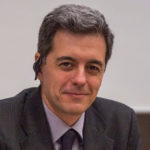
TV 2.5: Evolution of Middleware
Amid the changes in the habits of televised content, we have had the opportunity to identify cases which, in common, required an in-depth integration between broadcasting and broadband. The evolution of Ginga middleware was
essential for making those functionalities a reality and, in addition, in a backwards compatible manner. This talk will present the main aspects of this evolution, which has culminated in the specification of Ginga for D-profile receivers, also known as DTV Play.Prof. Marcelo Moreno, DSc. – Department of Computer Science (DCC / ICE) Federal University of Juiz de Fora (UFJF)
Marcelo F. Moreno is an Associate Professor at Federal University of Juiz de Fora (UFJF), where he is a permanent member of the Computer Science Postgraduate Program. He holds Master and Doctorate degrees on Informatics from PUC-Rio. He holds leadership roles in the International Telecommunication Union (ITU), including the rapporteurship of ITU-T Question 13/16 (Multimedia application platforms and end systems for IPTV), the co-chairmanship of IRG-IBB (Intersector Group on Integrated Broadcast-Broadband), the vice-chairmanship of ITU-T Study Group 16 (Multimedia) and the editorship of many ITU-T Recommendations and technical papers. He is also a coordinator of the Middleware Working Group at the Brazilian Digital TV System Forum (SBTVD). He has a solid history of publications and presentations in both Academia and Industry events.
